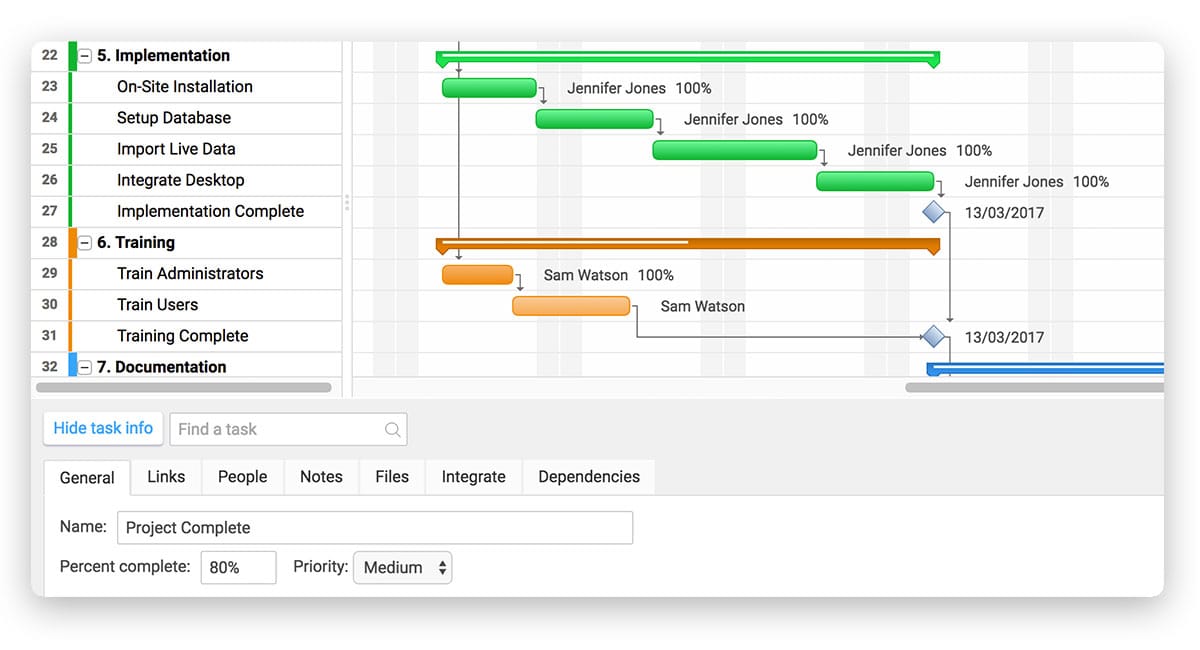How Likely and Cost Effective is it to Reduce Lead Time?
Executive Summary
- Companies are often told they can relatively easily reduce lead time.
- We cover how likely this type of program will be successful.

Introduction: Can You Really Reduce Lead Time?
Lead times are one of the major timing elements within the overall subject of supply chain planning. It is often proposed by Lean consultants that one can readily reduce lead time by focusing on this objective with a specific project. You will learn how likely these types of projects are to be successful.
Lead Time in Supply Chain or Lead Time Supply Chain
The lead time in the supply chain or lead time supply chain relates to lead times specific to supply chain planning and is what when combined to make up the time from when the order is placed until the order arrives.
- These are all terms that describe lead times specific to supply chain management.
- Lead times are, of course, also a general term that can apply to non-supply chain topics. For example, a product plan results in calculating a series of lead times for completing various stages of a project and the overall product duration.

Lead times are normally not shown graphically in supply planning systems. However, if they were — they would look something like a project plan. That is, lead times are a sequence of dependent durations with relationships. Manufacturing can’t commence upon material until the material arrives, and the material can’t arrive until the time has passed from the order, etc..
A Typical Article on How to Reduce Lead Time
An article by Unleashed Software has some fairly typical quotes on how to reduce lead time.
Longer lead times in the supply chain can have a series of negative knock-on effects for both the customer and the seller. Lead time is a huge variable influencing the performance of your inventory control processes and supply chain in general. Therefore, managers need to take every step possible to reduce it where they can.
Lead time variability does, but just the lead time itself is less so of such a negative “knock on effect.” When lead times are longer for the same demand, more is ordered. Inventory carrying cost is actually quite low, so while this sounds like an appealing or convincing assertion, it isn’t true.
The shorter the lead time, the more productive your company will be, and the easier it will be to increase profits. Shorter lead times are beneficial for all parties involved, and this article identifies the causes of longer lead times to illustrate how you might reduce them.
That is quite an assertion. It certainly simplifies planning if lead times are very short, but some lead times are just how long things take. And shorter lead times are not “beneficial for all parties involved.” A company that is pressured to provide short lead times may have to incur higher costs to speed the lead times, when in reality, the buying company can just carry more inventory.
Inventory Carry Costs
Let us take an inventory carrying cost and demonstrate how low the costs of inventory really are, and how this relates to lead times. The following table shows two scenarios. One which is a longer lead time and a second which is a shorter lead time.
Comparison of the Cost of Carrying Inventory Over Lead Time
| Product | Cost | Inventory Carry Cost Per Year | Lead Time in Weeks | Cost to Carry Inventory for Extra Time |
|---|---|---|---|---|
| A | $350 | 0.12 | 2 | $1.62 |
| A | $350 | 0.12 | 5 | $4.04 |
| $2.42 | ||||
| 0.007 |
Notice that this example shows a significantly longer lead time in the first scenario, than the second. Five weeks versus two weeks. However, even here, the cost difference is only $2.42 to carry the inventory for $350 item. This is only .007 or .7% or less than 1% of the cost of the item.
That is not much to get excited about.
However, even this amount is a problem for the proposal of the supposed benefits that come from the ability to reduce lead time. This is becuase it is unlikely that this supplier will reduce the lead time and not ask for more money than $2.42 to bring the lead time down by three weeks.
- Twelve percent is a reasonable holding cost, but recall, that holding cost is “per year.”
- Three weeks (the difference) is only 3/53 or .057 of a year.
This is why the math of cost-saving for attempting to reduce lead time does not work. And it is also why those that talk about reducing lead time generally do not estimate the calculated benefits because it is more convincing if one just makes assertions about how great it is if lead times are reduced.
How Effective is Putting Effort into Reduce Lead Time?
There is another problem with the attempt to reduce lead time. And this that it turns out to be both time consuming and expensive to quote lead times. Lean consultants don’t seem to recognize that suppliers want to get their product into the hands of their customers already. But the supplier (like the buying company) has to deal with constraints.
There is often discussion of expediting the various lead-times. Process improvement or Six Sigma or Lean consultants often propose simply reducing lead-times.
The proposal is often stated as…
“If we can reduce our lead times, by ABC% we could reduce our inventory by ZYX%.”
The consultant will often present the information as if many companies have had success in reducing lead times. Lean consultants tend to have a philosophical problem with any constraints that exist in the supply chain. Their training is designed around altering the limitations rather than adjusting to these realities. These consultants will propose working with suppliers or using various forms of expediting.

The problem with this is that it tends to provide a false impression of the actual constraints. And secondly, it tends to be proposed by people with a background in areas other than the domain of supplier management and shipping. That is, the lead times that exist are typically there for a reason.
Lead time reduction projects tend to take a lot of time, and most don’t work out. In the interim, the supply planning systems need to reflect the lead times as they are.
Applying the Wal-Mart Strategy with Suppliers?
Wal Mart is often pointed to as a company that can get suppliers to make significant adjustments for them. However, there is a distinct and serious problem in projecting what Wal-Mart has done and can do with suppliers to other companies.
Problem #1: What Percentage Are You of the Supplier’s Business?
Unless the company being discussed is a substantial percentage of the supplier’s business, it is unlikely the supplier is interested in adjusting its operations to suit one supplier. The lead-time is configured around the cost that is negotiated. As soon as shorter lead-time is requested, this is a change to the terms of that arrangement — and the buyer needs to expect to pay more for the same items. Lean consultants tend to make it sound as if suppliers will simply change the transaction terms without any request for extra compensation. Suppliers that won’t conform to the Lean consultant’s expectations are often categories as “difficult.”
Problem #2: What is the Amount of Extra Charge the Supplier Will Demand?
The Lean consultant may propose switching to different suppliers with shorter lead times. However, this usually is only done at a higher cost. In many cases, the only lead-time reasonably capable of being expedited is the shipping lead time. The shipping lead-time can only be accelerated at considerable expense (unless the product in question is of high value and low weight). A second area that is proposed is that the current manufacturing lead-times can be reduced.
Problem #3: Proposed for the Benefit of the Company or of the Lean Consultant?
When a Lean consultant proposes reducing lead times, it typically is just one of the areas that he is trying to pitch to justify his cost billing the account.
Reducing Manufacturing Lead Times?
Again, in many cases, it is possible, but only at considerable expense. This often means installing more machinery or adding more machine operators. Overall, manufacturing capacity is frequently reduced (and therefore lead times lengthened) through the process of product proliferation. Thus manufacturing capacity could be increased and lead times reduced by cutting down on changeovers — but this is typically unacceptable to marketing.
Why Looking for Cheap Manufacturing in Poor Countries Has Massively Increased Lead Times
Finally, with the use of so many suppliers in so many industries that are driven by cost considerations, it means that the lead-times have lengthened in the developed countries. Many input products for at least some industries come from China. Companies could have sourced those products from the US, but they preferred the higher margins of Chinese manufacturing.
The Issue of Lead Times and the “Responsive Supply Chain” Concept
The problem with this idea is that it can be easily contradicted by looking at lead times. Changes to forecast cannot realistically be expected to be managed efficiently if they come in within total manufacturing or procurement lead times. However, the response one gets is that materials can be expedited.
What would seem desirable is for companies to build flexible lead-time capabilities into their products so that different lead times could have different costs associated so that the model could pick the best, most appropriate lead-time.
The problem with this is most companies don’t know the actual costs of expedited products. Secondly, they have a big enough problem managing the master data of the lead times they already maintain.
The Reality of Projects to Reduce Lead Time
It is rare for companies to reduce their lead times substantially. Lead times tend to be far more fixed than is often promoted by various process improvement consultants. Therefore, rather than being distracted by concepts around reducing lead times, the most critical function is simply reflecting the lead times in the supply planning system. Any inaccuracy of the lead times impacts the supply plan’s accuracy the same way that a forecast error would.
Conclusion
Lead times that are presented to companies when they negotiate with suppliers are normally what the supplier is offering in terms of a lead time at a specific price. Lead times can be shortened, but normally with expedited shipping or manufacturing, which then increases the purchase price. This same issue holds true for the manufacturing operations of the same company trying to reduce lead time.
For planning purposes, the accuracy of the lead times in the system is more important than whether the lead times are shorter or longer. The role in supply planning with lead times is to reflect the actual lead times within the supply planning system.
Projects to reduce lead time have been proposed for decades by Lean consultants as a type of fool’s gold. They fit into a pattern of Lean and or Six Sigma devotees who have a philosophy built around denying constraints in the supply chain. It is also not true that companies are driven to lower lead times. Companies have accepted much longer lead times when it meant being able to obtain a far higher margin from using manufacturing in much more distant locals.
References
https://www.unleashedsoftware.com/blog/reduce-lead-times-supply-chain